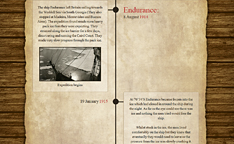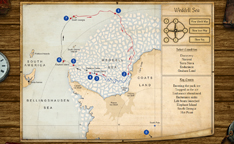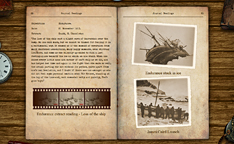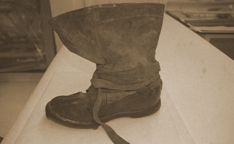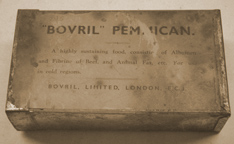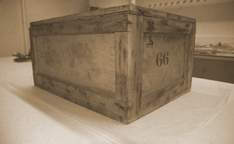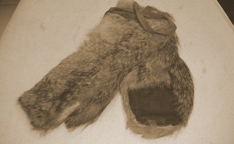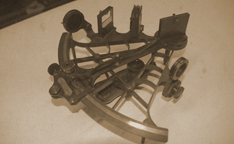Imperial Trans-Antarctic Expedition 1914-17 (Endurance)
Expedition Aim
The expedition's aim was to be the first to traverse the Antarctic continent from one side to the other via the South Pole.
Summary
- Ernest Shackleton, expedition leader, planned to sail on Endurance to the Weddell Sea. A second ship, Aurora, would sail to the Ross Sea to drop a shore party to lay supply depots for the expedition members travelling from the Weddell Sea coast.
- The expedition's aims were never attempted as Endurance became stuck in the ice before they could land on the Antarctic continent and the ship was crushed.
- The crew of Endurance abandoned ship in October 1915 and spent almost five months camping on an icefloor, until this began to melt and they used their three lifeboats to sail to the uninhabited Elephant Island, where they set up camp.
- From Elephant Island, Shackleton launched a rescue mission to get his men safely home, leaving 28 men to wait for rescue.
- Crossing the Roaring Forties in the modified lifeboat James Caird, Shackleton, Crean, Vincent, McNish, Worsley and McCarthy sailed dangerous waters to get to South Georgia where they would be able to raise the alarm at the island's whaling station.
- Unfortunately, the men landed on the opposite side of the island to the whaling station and were forced to trek across the mountainous interior (which had never been crossed previously) to raise the alarm.
- They succeeded and, after a period recovering from their ordeal, they persuaded the captain of the Chilean vessel Yelcho to rescue the men they had left behind on Elephant Island.
- On the other side of the continent, three men from the Ross Sea party died during the depot laying journeys.
- When the men made it back to Britain many went on to fight in the First World War.
Background to the expedition
By 1914, both the North and South Pole had been attained. Shackleton chose a new goal for his next expedition, to be the first to traverse the Antarctic continent. The expedition would use two ships, which would land parties on either side of the Antarctic.
Shackleton would sail to the Weddell Sea in Endurance and from there lead the crossing party; the second ship, Aurora, was to head for the Ross Sea. Sledge parties would set out from both ships - the Weddell Sea party would cross via the South Pole and meet the Ross Sea party at the Beardmore Glacier where they would have laid food depots for the final phase to the Ross Sea coast.
Shortly before the expedition departed, Britain was getting ready to enter the First World War. Shackleton contacted the Admiralty offering them his ships, men and supplies for the war effort. However, the Admiralty declined, sending a one-word telegram stating that he should 'Proceed.'
Awards from the expedition
The greatest achievement of the Endurance expedition was the survival and homecoming of the 28 men. The emotional challenges of the uncontrolled drifting with Endurance, the marching on treacherous sea ice and sailing across to Elephant Island among ice floes and the four months waiting on Elephant Island were brutal. The men on-board the James Caird sailed 800 miles in the harsh Southern Ocean, survived a monster wave that nearly capsized their boat, and then achieved the first crossing of the mountains of South Georgia without a map.
The original scientific plan was for the four scientists aboard to do research from a fixed base on land in Antarctica. But it was only on South Georgia that they had the opportunity to do land based research. Nevertheless, scientific measurements were undertaken during the drift of the Endurance and this achieved some excellent scientific results.
The Ross Sea Party achieved their mission, to lay depots for the 'Trans-Antarctic Party', in extreme conditions. The first season's sledging journey in 1915 led to a depot close to 80° S. The next year, the depot at Mount Hope near the Beardmore Glacier at 83°30' S, was laid. Despite their ship being carried away in a storm with the main supplies aboard and the death of three of the men including the Captain, Aeneas Mackintosh, The Ross Sea Party achieved their task of laying the depots, albeit for Shackleton's party that never began to cross Antarctica.
From the crew of Endurance, the following people received the Silver Polar Medal: Sir E.H. Shackleton; F.A. Worsley, R.N.R.; L. Greenstreet, R.N.R; L.R. Rickinson, R.N; J.M. Wordie; R.S. Clark; L.D.A. Hussey; A.H. Macklin; G.E. Marston; J.R. Francis (Frank) Wild, R.N; H.T. Hudson, R.N.R; T. Crean, R.N; A. J. Kerr; R.W. James; T.H. Orde Lees; J.F. Hurley; J.A. McIlroy; A.B. Cheetham, R.N.R.
From the Aurora party the Silver Polar Medal was awarded to: A.L.A. Mackintosh, R.N.R; A. O. Stevens; I.O. Gaze; L.A. George Hooke; C.A. Donnelly; C.C. Mauger (Manger); J.R. Stenhouse, R.N.R; J.L. Cope, R.N.V.R; A.K. Jack; A.P. Spencer-Smith; L.G.F. Thompson; A.H. Larkman, R.N.V.R; A.H. Ninnis, R.N.V.R; J. Paton, R.N.
E.E.M. Joyce, R.N; R.W. Richards; V.G. Hayward; H.E. Wild, R.N, all received the Albert Medal for gallantry during this expedition.
For the relief of the Aurora, 10 people received a clasp 'ANTARCTIC 1917': J.L. Cope, R.N.V.R; A.K. Jack; R.W. Richards; H.E. Wild,R.N; A.L.A Mackintosh, R.N.R; I.O. Gaze; E.E.M. Joyce,R.N; A.O. Stevens; V.G. Hayward; A.P. Spencer-Smith.
Bronze Polar Medals were awarded to: Endurance: C.J. Green, R.N; W.E. How; T.F. McLeod; W.L. Bakewell; T. McCarthy, R.N.R and P. Blackborow.
Aurora: E.T. Wise; W. Kavanagh; A. Warren, S. Grady; S. Atkin; A. Downing; C. Glidden; W. Mugridge (Muggeridge).
Life after the expedition
After the expedition, most of the men from Endurance and Aurora served in the military during World War I. Three of the crew died, and five others were wounded. After the War, Shackleton, together with some of the previous members from Endurance, set out on the Shackleton–Rowett Expedition, aboard the ship Quest. The expedition left England in September 1921, and on 5 January 1922 Shackleton died of a heart attack in his cabin. Shackleton was later buried at the graveyard at South Georgia, before the expedition continued to Elephant Island, and returned back to England in September 1922.
